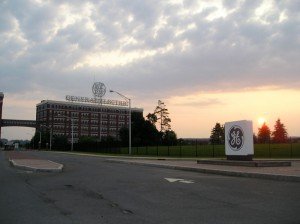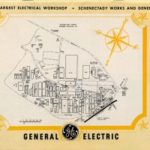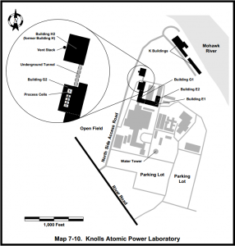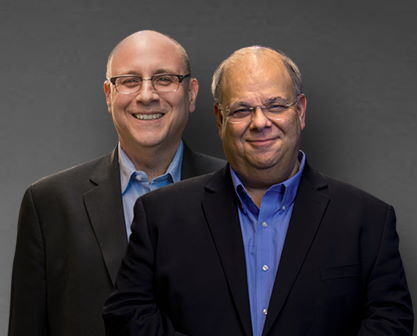GE Schenectady
You may be entitled to receive compensation. Mesothelioma and lung cancer victims & their families have been awarded over $1 million+ from easy access to funds. Call us today to apply.
Over the past 20 years, we've helped 1,000s of families claim the compensation they deserve with no upfront costs to them.

Schenectady, New York is the original home of General Electric – one of the largest and most well-known corporations in American history. During the late 1800s and throughout the twentieth century, the company hired thousands of local workers to meet the demand for GE’s products and services, and the economy of Schenectady and the surrounding areas began to thrive. While this helped the area grow, the company often made use of asbestos in its production facilities, prototype buildings, and products, such as turbines.
Asbestos was used throughout General Electric’s plants, factories, and research facilities until the 1980s. Many workers in Schenectady and New York’s Capital District have developed mesothelioma as a result of their asbestos exposure at GE. In addition, many people around the country who worked with General Electric’s turbines and electrical products have also developed mesothelioma.
The mesothelioma lawyers at Belluck & Fox, LLP are very familiar with General Electric’s Schenectady facilities. We have represented a number of clients who developed mesothelioma after working at GE, including laborers, chemical engineers, laboratory technicians, welders, electricians, and secretaries.
We have a wealth of research regarding this location in our library, including photographs, maps, documents, and records related to the purchase and use of asbestos products at General Electric. The many companies who made and sold asbestos products are responsible for causing mesothelioma, and it is your right to sue these corporations if you have received a mesothelioma diagnosis.
Corporate History
Table of Contents
Schenectady, NY is known as “Electric City” to area residents, due in large part to inventor Thomas Edison and the company he founded in the city, General Electric (GE). In 1887, Edison relocated his company, Edison Machine Works, to Schenectady. Five years later, he established GE to keep pace with the advancing technology of the time. The company was a quick success, due in no small part to Edison himself and expanded rapidly in both size and scope as the American public began to embrace and demand electricity and electrical products.
General Electric was one of the dozen original businesses listed on the Dow Jones Industrial Average when it was formed in 1896 and remains the only original company on the list. The popularity of electricity grew exponentially over the course of the twentieth century, and GE’s profits grew to match. The company expanded greatly during this time, with its interests ranging from home appliance manufacturing to managing TV networks. Over the last century, the company has further diversified its business across many industries and currently makes over 50 percent of its revenue from its financial services division.
Asbestos Exposure at GE’s Schenectady-Area Job Sites
 Although GE is currently headquartered in Connecticut, its original corporate base was Schenectady, and the area has served as a center of much of GE’s manufacturing and research since the company began. The impact GE had on the local community is still felt today, and many of the company’s Schenectady sites are still in operation. GE was once one of the largest employers in Schenectady County and New York state. Unfortunately, many of the parts, materials, and equipment were made from or contained asbestos.
Although GE is currently headquartered in Connecticut, its original corporate base was Schenectady, and the area has served as a center of much of GE’s manufacturing and research since the company began. The impact GE had on the local community is still felt today, and many of the company’s Schenectady sites are still in operation. GE was once one of the largest employers in Schenectady County and New York state. Unfortunately, many of the parts, materials, and equipment were made from or contained asbestos.
Prior to the 1980s, nearly every factory, research lab, and industrial facility in GE’s Schenectady operations used asbestos. This had put thousands of asbestos-exposed workers in the Schenectady area throughout the twentieth century at high risk of developing mesothelioma and other asbestos diseases.
The main General Electric Schenectady Works campus was particularly important to GE. Development of the site was first established 6 years prior to the formation of GE, in 1886, and was intended to be a site of Thomas Edison’s earlier company, Edison Machine Works. The site grew to contain nearly 300 buildings at its peak and stretched for over a mile in length. Schenectady Works had a diverse array of facilities and existed as a city-within-a-city design, even going so far as to contain its own movie theater as well as baseball and football fields. Amongst its work areas were facilities ranging from research laboratories to power stations, machine and tool rooms. It had chemical production, storage, shipping, and warehouse facilities.
Also in the Schenectady area are two research facilities in Niskayuna and the nearby town of West Milton called Knolls Atomic Power Laboratory (KAPL). These labs were used by GE to research nuclear energy and propulsion for the Navy, as well serving as support for GE’s projects being conducted at the company’s Hanford, Washington nuclear weapons research facility. These sites had nuclear submarine prototypes used to develop the first nuclear submarines. These prototypes used asbestos in pumps, valves, and other equipment. Knolls Atomic in Niskayuna is just over five miles east of the original Schenectady facility, while the West Milton facility is located just over 15 miles to the north.
Asbestos was used in nearly every area of these facilities. Pipe ran throughout and between buildings, often carrying liquid and steam at a high heat. Some pipes were insulated with asbestos and used asbestos gaskets and packing to create seals. Pumps moved the liquids and gasses through these pipes, and valves precisely controlled flow. These pumps and valves were often coated with asbestos insulation and used gaskets and packing made from asbestos. When these parts needed regular maintenance or repairs, the asbestos components would need to be scraped, wire brushed, and removed, releasing dust into the air.
When asbestos was reapplied afterward, it often came as sheets that needed to be cut to shape, or as powder, which needed to be mixed with water and applied as cement. This would contaminate the air with asbestos fibers.
In the powerhouses, many boilers were used to heat water. These boilers were insulated with asbestos, contained asbestos refractory, and had pipes and gauges with asbestos gaskets. These boilers sent steam to turbines, which are spinning mechanisms that generate electricity from steam. These turbines used asbestos parts due to the large amount of heat, moisture, and electricity involved in their regular use. As with the pipes above, regular maintenance of this equipment required scraping, removing, and reapplying asbestos.
Boiler tenders and other workers assigned to these areas were often directly exposed to asbestos dust. The Knolls Atomic Power facilities would operate in a similar way, moving liquid and steam heated through nuclear fission through a network of pipes, pumps, and valves insulated and sealed with asbestos.
Construction projects were dangerous endeavors because many parts and materials used in the construction of the facilities were made from asbestos. Asbestos drywall, tile, roofing, insulation, and fireproofing spray were regularly implemented throughout the architecture of the buildings at General Electric Schenectady Works. When these were installed or had to be demolished, materials were often sawed, cut, crushed, crumbled, and cracked. This process would release asbestos dust into the air, which was easily inhaled and ingested by workers in the area.
Many companies were responsible for selling these asbestos parts to General Electric for use in its plants and products. Companies that manufactured asbestos parts were responsible for the exposure of millions of Americans to asbestos, which has led to the development of thousands of cases of mesothelioma.
Asbestos Products Produced at GE
GE produced a number of its own asbestos products during the twentieth century. One such product was GE turbines. As mentioned above, turbines use the heat and steam produced by boilers to generate electricity. To withstand high heat and corrosion from this super-heated steam, turbines utilized asbestos parts and insulation prior to the 1980s. Because of the stress these parts were exposed to, they had a tendency to naturally release asbestos particles, and required regular maintenance that resulted in excessive dust and fibers.
GE produced lines of wire and cable that included asbestos in their design, which would release asbestos when cut and stripped. GE made motors, plastic compounds, appliances, radios, and TVs with asbestos parts.
Belluck & Fox, LLP Fights for Asbestos Victims
If you or someone you care for has been diagnosed with an asbestos disease, such as mesothelioma, asbestosis, or lung cancer caused by asbestos, it is important to seek immediate legal counsel. Lawsuits can help pay medical bills and can help provide for your family. Statutes of limitation imposed on asbestos cases provide victims with a limited time in which to seek compensation, making it important to act quickly upon receiving a mesothelioma diagnosis.
The attorneys at Belluck & Fox, LLP have won over $1 billion from corporations that sold asbestos products to consumers and industry and represented victims exposed to asbestos while working at GE in Schenectady.
Battling mesothelioma is hard. You should not have to worry about financial matters. Our top ranked New York asbestos attorneys at Belluck & Fox, LLP will travel to your home and handle all the work on your case. We will not refer you to another law firm or lawyer. There is no financial risk on your part; we only receive payment if we recover money for you and your family. Visit our New York office and we can be reached at 1-845-684-4001 or through our online contact form.
GE
1 River Rd,
Schenectady, NY 12345
Associated Occupations
- Electricians
- Engineers
Other Nearby Companies
- ALCO
- Schenectady Chemical
- Albany Felt Company
